This continues our tale of drikkelig.no does Sweden, after quite a break. We visited Gammelstilla 16 July 2014.
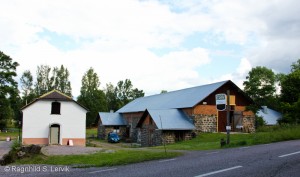 We had an appointment at Gammelstilla in the afternoon of the 16th with Sarah Winges (one of the founders). In the morning we went to Furuvik (the zoo and amusement park) and found it took longer to locate Gammelstilla than expected (Google placed it wron, possibly at a corresponence address rather than the actual location), so we were late for our appointment. Fortunately for us, Sarah was also late (coming straight from work) so we arrived at about the same time.
We had an appointment at Gammelstilla in the afternoon of the 16th with Sarah Winges (one of the founders). In the morning we went to Furuvik (the zoo and amusement park) and found it took longer to locate Gammelstilla than expected (Google placed it wron, possibly at a corresponence address rather than the actual location), so we were late for our appointment. Fortunately for us, Sarah was also late (coming straight from work) so we arrived at about the same time.
 Sarah first gave us an introduction to the history of Gammelstilla Bruk (“bruk” in this context in Swedish is the semi-independent part of a farm that refines agricultural or natural resources, such as milling or iron works). Gammelstilla is part of what is known as “järnriket” – the iron kingdom – and wrought iron was produced here from the middle of the 17th Century, steel from around 1850. Unfortunately for Gammelstilla, other steel producers in the area obtained better patents on steel, and steel production ended here in 1914. Gammelstilla were pioneers in electricity production from water power, however, and the power station supplied a mechanical workshop, so that the “bruk” had other sources of income. Not until 1971 was the last industrial activity at the Gammelstilla terminated. Since then the buildings had been left to deteriorate.
Sarah first gave us an introduction to the history of Gammelstilla Bruk (“bruk” in this context in Swedish is the semi-independent part of a farm that refines agricultural or natural resources, such as milling or iron works). Gammelstilla is part of what is known as “järnriket” – the iron kingdom – and wrought iron was produced here from the middle of the 17th Century, steel from around 1850. Unfortunately for Gammelstilla, other steel producers in the area obtained better patents on steel, and steel production ended here in 1914. Gammelstilla were pioneers in electricity production from water power, however, and the power station supplied a mechanical workshop, so that the “bruk” had other sources of income. Not until 1971 was the last industrial activity at the Gammelstilla terminated. Since then the buildings had been left to deteriorate.
In 1990 a group of locals started a foundation named Gammelstilla Bruk. They have renovated the buildings and these days they house a café, a local theatre group and now: A whisky distillery.
When a group of friends started to plan a whisky distillery in the area, Gammelstilla bruk seemed like a natural location. Their first plan was to use a large brick building, built by the “brukspatron” Gusander as a personal residence at the tail end of the 19th Century. Gusander intended it as a demonstration of his own excellence, and the brick were produced at Gammelstilla. Unfortunately it was at this time that Sandvik bruk with their better steel pattern, absorbed Gammelstilla’s market shares and caused Gusander to declare bancruptcy, so the building was never quite finished. Our distillery enthusiasts had stars in their eyes and the building plan all worked out before reports showed that the building contained more lead in its wooden construction than is permitted in food production .
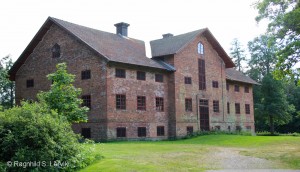
The enthusiast were at first downcast, but then someone pointed out that Gammelstilla bruk had another empty building, perhaps the distillery could be housed there? Long term it is still hoped that the brick building may be renovated and used, but for the time being Gammelstilla distillery is well housed.
They purchase their malt, not peated, from the only Swedish maltings, Viking malt. The wash is produced in a icro brewery setup belonging to one of the founders, and they use dry yeast.
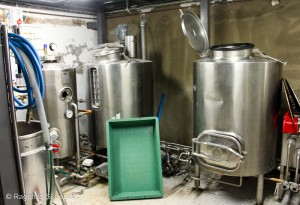 The stills are designed by the founders and were produced in Sweden at Beckströms Mekaniske. The wash still has a capacity of 500 liter, the spirit still 300. The first new spirit ran from the still in April 2012, so in just a couple of months Gammelstilla will come of age.
The stills are designed by the founders and were produced in Sweden at Beckströms Mekaniske. The wash still has a capacity of 500 liter, the spirit still 300. The first new spirit ran from the still in April 2012, so in just a couple of months Gammelstilla will come of age.
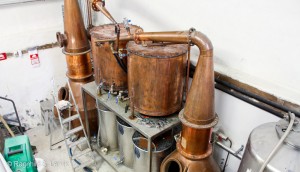 Some adjustments have been made after the startup, the wash still had a middle piece added to adjust the height of the neck (and thereby increase reflux) in 2013. When we were there, they were only producing 50 liters a week, which is one run. They have had limited capacity in the electrical supply, so they had only been able to run either the “brewery” or the stills, but that had very recently been rectified.
Some adjustments have been made after the startup, the wash still had a middle piece added to adjust the height of the neck (and thereby increase reflux) in 2013. When we were there, they were only producing 50 liters a week, which is one run. They have had limited capacity in the electrical supply, so they had only been able to run either the “brewery” or the stills, but that had very recently been rectified.
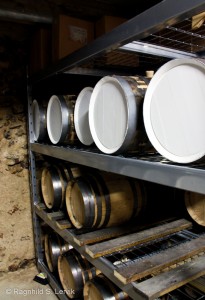 There is not a lot of spare room in the distillery building, it’s pretty obvious that they will need to expand somehow, even if they can’t get the other building fixed.
There is not a lot of spare room in the distillery building, it’s pretty obvious that they will need to expand somehow, even if they can’t get the other building fixed.
The power station currently belongs to GSW and feeds the national grid, which has to be a reassuring asset economy-wise.
[Best_Wordpress_Gallery id=”6″ gal_title=”Gammelstilla”]
